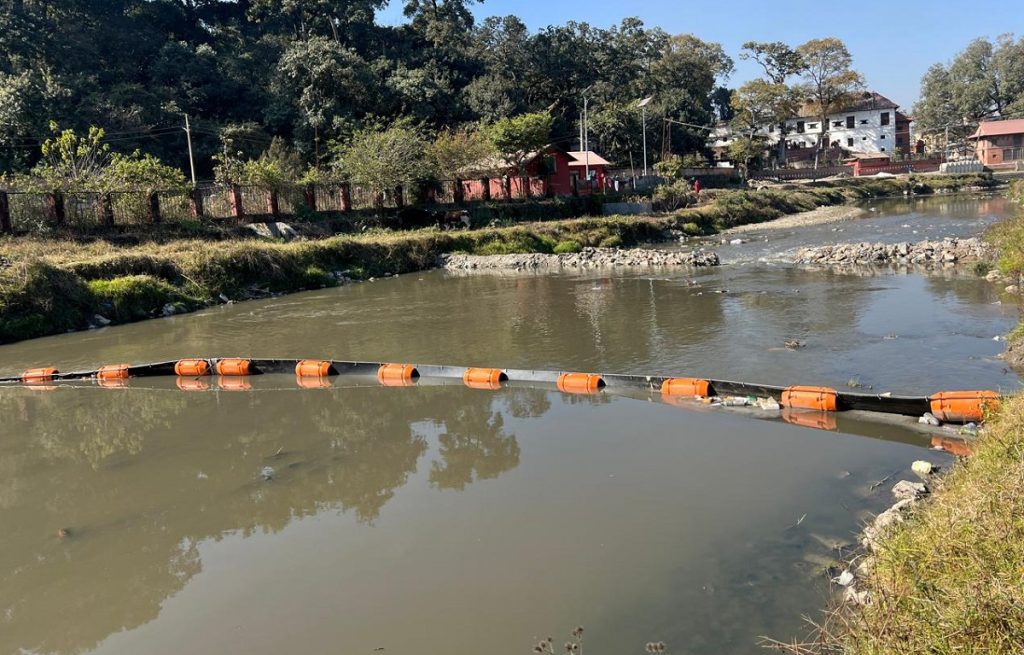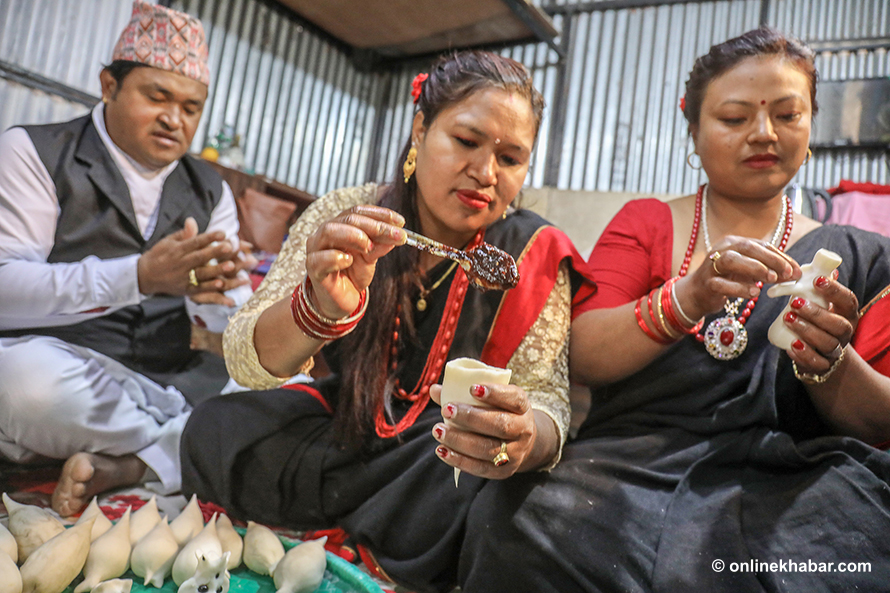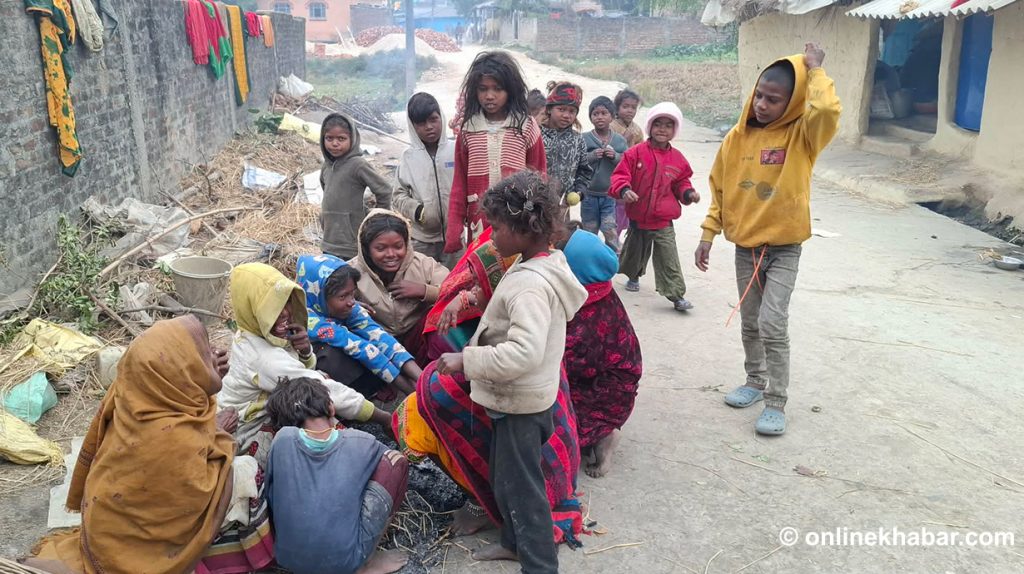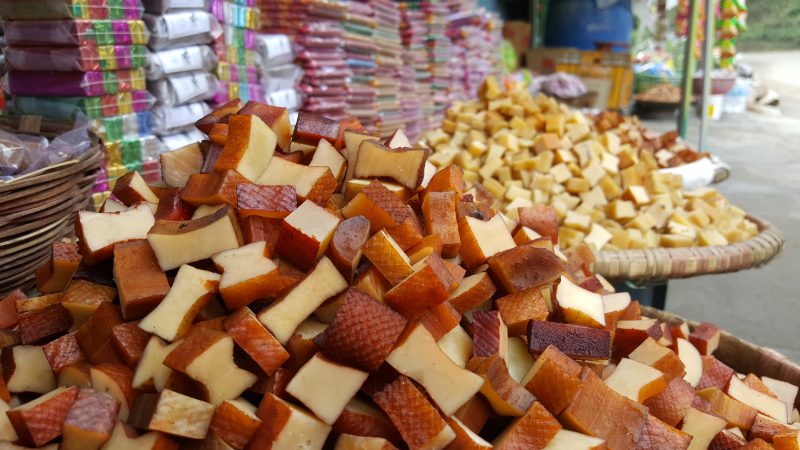
It is an odd thing, to watch a food once chewed by yak herders beneath the snowlines of Langtang and Dolpo reappear in the mouths of golden retrievers in Chicago and Tokyo. Yet that is precisely what has happened to chhurpi, Nepal’s rock-hard, smoke-dried cheese whose gustatory significance once lay in its austerity, its simplicity, its ability to nourish without fanfare.
That a dog in Manhattan now gnaws on a slab of chhurpi is neither joke nor accident. It is a parable of globalisation, resilience, and the shifting topography of value.
Chhurpi is not a product of industrial design or culinary artifice. It is born from constraint. In the vertical geography of Nepal’s highlands, where refrigeration is alien and pasture seasonal, milk is ephemeral. It spoils. Chhurpi is how the mountain folk answered impermanence, by distilling milk into something near-permanent. Smoke-cured, sun-hardened, and aged for weeks, it is less cheese than time crystallised.
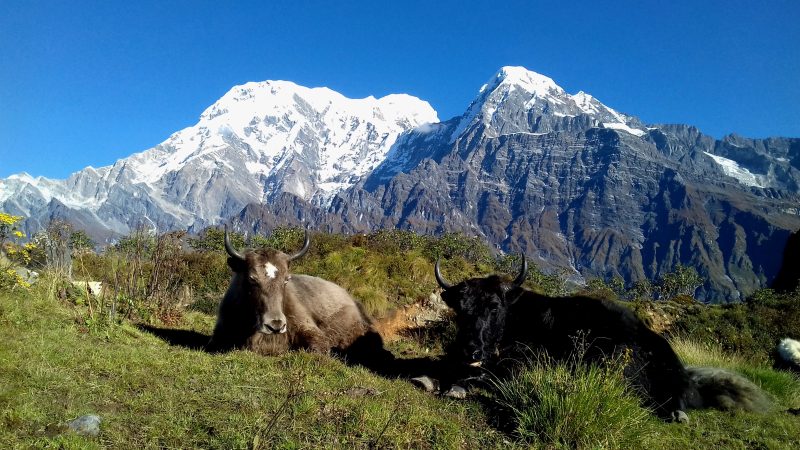
But now, chhurpi has transcended its origin as necessity. Rebranded as “Himalayan Dog Chew,” it has infiltrated the elite pet markets of the Global North. As of 2025, Nepal exported over Rs 4 billion worth of chhurpi in a single fiscal year. More than 2,200 metric tonnes were shipped out primarily to the United States, which alone accounts for nearly 87% of the trade. What began as subsistence has become surplus. What was once a mountain snack is now a commodity traded across oceans.
Yet this is no ordinary commodity. It is not copper, not cotton, not lithium. Chhurpi resists standardisation. No two pieces are identical, and therein lies both its charm and its challenge. Its irregularity signals origin. Its durability encodes the altitude. And its stubborn texture reminds us that time slowness is still a virtue in some corners of the global economy.
Nepal has not industrialized chhurpi in the typical sense. It remains overwhelmingly artisanal. Farmers in Ilam, Syangja, Ramechhap, and Panchthar supply the raw milk. Cooperatives, often headed by women, carry out the processing in backyard smokehouses.
Exporters, some direct, some through intermediaries package and label the product for markets they may never see. This network, imperfect and often inefficient, is also one of the few examples of value chains in the Global South that have managed to capture a niche in global trade without losing their soul.
But the story of chhurpi is about epistemology how knowledge travels, how meaning shifts. In Nepal, chhurpi was never considered luxurious. In fact, it was often given away, traded informally, or stored quietly for lean seasons.
Its cultural value lay in its endurance, not in its marketability. In the West, however, chhurpi has acquired new meanings: organic, gluten-free, long-lasting, “Himalayan.” Each word a signal. Each signal a price point.
This semiotic mutation reveals something essential about globalisation: that products are not globalized; meanings are. When we say Nepal is exporting chhurpi, we are also exporting a set of narratives about purity, altitude, tradition, and ethical consumption. The cheese is real, yes, but the real currency is symbolic. What the consumer buys is not just a chew, but a story a dream of the exotic, the remote, and the untouched.
Yet symbols can be unstable. The success of chhurpi in the pet market is contingent not only on taste and durability but on global trends that Nepal does not control: the fetish for “natural” pet food, the ethical consumer’s guilt, the romanticisation of the Himalayas. If these shift and they will, the entire scaffolding of value may collapse. That is the fragility of exporting meaning rather than matter.
This fragility is compounded by structural challenges. Nepal lacks robust food safety regulations for export-oriented chhurpi. Most of its production is informal, its cooperatives under-capitalised, its transportation infrastructure uneven.
The Department of Food Technology is only now moving towards SPS standardisation compatible with WTO frameworks. The risk of a single safety scare derailing the industry is real. So too is the risk of market capture by multinational pet companies who, once convinced of chhurpi’s profitability, may bypass Nepal altogether and manufacture imitation products in more cost-effective economies.
The geopolitical geography of this trade must also be examined. Nepal’s near-total dependence on the United States for chhurpi exports mirrors an older dependency logic, one that keeps peripheral economies tied to the consumption appetites of the West.
Diversifying into European, Southeast Asian, and Middle Eastern markets is not simply a business strategy. It is an epistemic necessity. The more Nepal depends on one market, the less agency it retains over its narrative.
Yet amidst these concerns, chhurpi still offers something rare: a pathway to rural empowerment that is not extractive. Unlike cash crops or mineral exports, chhurpi is made by hand, by communities, by women and men who remain stewards of the knowledge required to make it. It is not just a product but a process. And that process—localized, low-carbon, culturally embedded—is precisely what global food systems need more of.
In a climate-disrupted world, where industrial agriculture has pushed us to ecological brinksmanship, chhurpi stands as a low-impact, high-value counterpoint. The livestock that produce the milk graze naturally. The drying process is solar or wood-fueled.
The packaging is minimal. It is, in essence, a climate-smart value chain without the fanfare of buzzwords. But for it to thrive, it must be protected, not only from ecological shocks and trade volatility, but from the logic of scale that sees artisanal as inefficient and homogenisation as inevitable.
Perhaps chhurpi’s greatest lesson is that value is never intrinsic. It is created—in negotiation between place, people, and perception. The challenge for Nepal, then, is not simply to produce more chhurpi but to protect the matrix of meaning that gives chhurpi its current value: the Himalayan ecology, the pastoral rhythms, the knowledge held by dairy farmers in forgotten corners of the country.
A nation like Nepal cannot compete with China or Brazil in volume. But it can compete in stories, in authenticity, in the singular. In an age of standardisation, difference is a currency. Chhurpi is different. It is not efficient, not scalable, and not industrial but it is meaningful. That meaning, curated and protected, could be worth more than any commodity Nepal has ever exported.
In the end, chhurpi is a meditation on slowness, on resilience, on the alchemy of transformation. Milk into stone. Necessity into luxury. Heritage into economy. And if stewarded wisely, it might just chew its way into history not as a snack, but as a symbol of what thoughtful globalisation might look like.








